#Madame Colombin
Explore tagged Tumblr posts
Text

La Mode illustrée, no. 33, 13 août 1899, Paris. Toque élégante. Modèle de Mme Colombin, rue de La Tour-d'Auvergne, 41. Ville de Paris / Bibliothèque Forney
Cette toque, faite en mousseline de soie blanche brodée de chenille noire, disposée en légers bouillonnés sur la forme, est ornée à gauche de roses roses et de feuillages de différents tons; un oiseau de paradis blanc, fixé par une boucle en simili, complète la garniture de la toque.
—
This cap, made of white silk muslin embroidered with black chenille, arranged in light swirls on the form, is adorned on the left with pink roses and foliage of different shades; a white bird of paradise, fastened by a faux leather buckle, completes the trim of the hat.
#La Mode illustrée#19th century#1890s#1899#on this day#August 13#periodical#fashion#fashion plate#description#Forney#dress#collar#bow#Modèles de chez#Madame Colombin
35 notes
·
View notes
Text

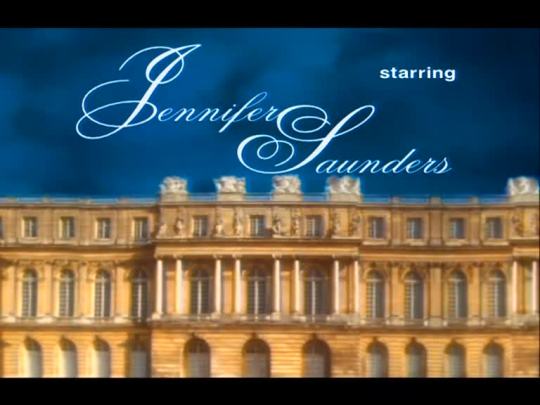
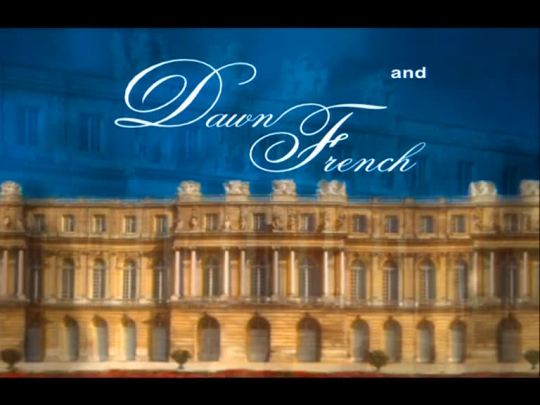
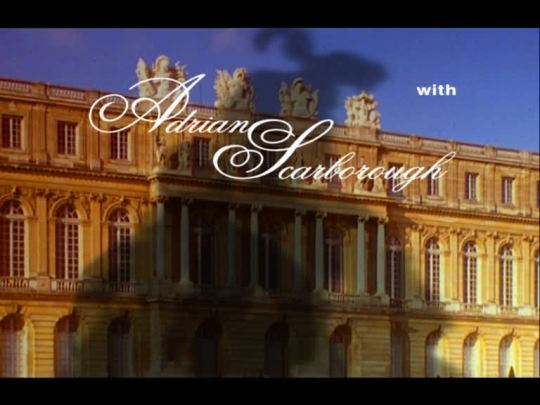
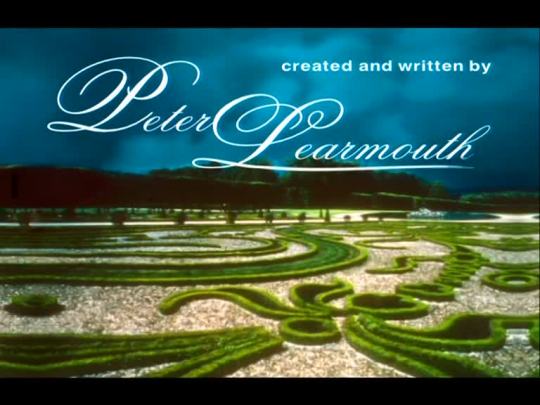
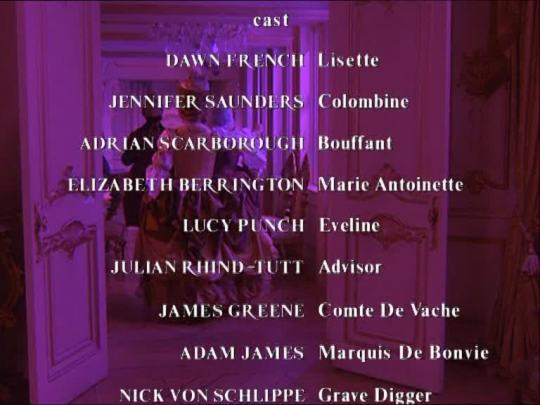
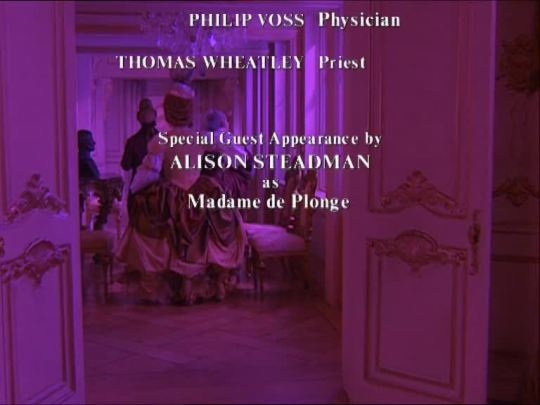
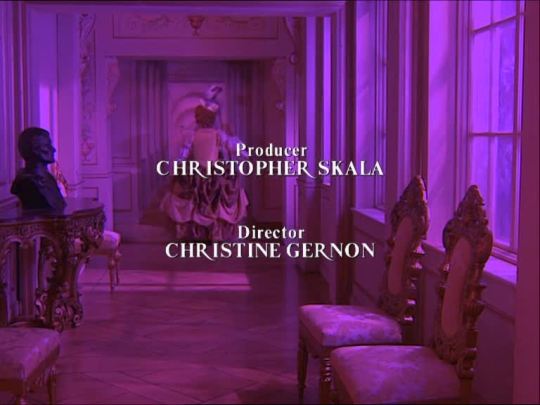
Let Them Eat Cake - BBC One - September 9, 1999 - October 14, 1999
Sitcom (6 Episodes)
Running Time: 30 minutes
Stars:
Jennifer Saunders as Colombine, Comtesse de Vache
Dawn French as Lisette
Adrian Scarborough as Monsieur Bouffant
Alison Steadman as Madame de Plonge (episodes 1, 2, 4, 6)
Lucy Punch as Eveline de Plonge (episodes 1, 2, 4, 6)
Elizabeth Berrington as Marie Antoinette (episodes 1, 4, 6)
Julian Rhind-Tutt as Marie Antoinette's Advisor (episodes 1, 4, 6)
Linda Spurrier as 1st Aristocratic Woman (episodes 2, 3, 6)
Maggie Whiting as 2nd Aristocratic Woman (episodes 2, 3, 6)
Guest Stars:
James Greene as the Comte de Vache (episodes 1 & 4)
Adam James as the Marquis de Bonvie (episode 1)
Philip Voss as Physician (episode 1)
Richard E. Grant as Monsieur Vigée-Lebrun (episode 3)
Maggie Steed as Madame Vigée-Lebrun (episode 3)
Kathy Burke as Cecile (episode 5)
Louisa Lytton as Little Girl (episode 5)
#Let Them Eat Cake#TV#BBC One#Sitcom#1999#1990's#Dawn French#Jennifer Saunders#Adrian Scarborough#Alison Steadman
2 notes
·
View notes
Text
Pierrot and Harlequin, Mardi Gras by Paul Cézanne, 1888
Origins
Atellana comedy
Plautus
Passion Plays
Arlecchino, as we know him, is a stock character dating back to seventeenth-century Commedia dell’arte. He also has origins in the atellana farce of Roman antiquity (4th century BCE). In fact, the use of stock characters is a feature of the atellana. Moreover Commedia dell’arte characters could be borrowed from commedia erudita. Molière‘s (1622 – 1673) Miser or L’Avare (1668) was borrowed from Plautus‘ (c. 254 – 184 BCE) Auluraria (The Pot of Gold).
However, in European countries, comedy has more immediate origins. It emerged as a brief mirthful form, a mere interlude, during lengthy medieval Passion Plays, Mystery Plays and Miracle Plays. Passion Plays were extremely long, so interludes, comedy, were inserted between the “acts” to keep the audience entertained. These became popular and eventually secularized the religious plays. However, Passion Plays have not disappeared totally. For instance, the Oberammergau Passion Play (Bavaria) has been performed since 1634, keeping alive the birthplace of farces and tom-foolery.
Harlequin
Hellequin, Herla, Elking
Tirstano Martinelli, the first Harlequin
Zanni (servants)
British harlequinades (eighteenth-century)
It would appear that the commedia dell’arte’s Arlecchino (Harlequin) was also culled out of Passion Plays, where he was a devil: Hellequin, Herla, Erlking and other spellings and names. The origin of the name is attested by 11th-century chronicler Orderic Vitalis (1075 – c. 1142). The name Harlequin was picked up in France by Tristano Martinelli, the first actor to play Harlequin. (See Harlequin, Wikipedia.)[i] Tristano played the role of Harlequin from the 1580s until his death in 1630. At this point, Harlequin became a stock character, an archetype, in the Commedia dell’arte. Given that the success of the Commedia dell’arte performances depended on an actor’s skills, we can presume Tristano was a fine comedian.
Arlecchino (Arlequin, Harlequin) is a zanno, a servant whose function was called Sannio in the Atellana, Roman farcical comedies. There were many zanni, (Brighella, Pulchinello, Mezzetin, Truffadino, Beltrame, and others). Their role was to help the young lovers of comedy overcome obstacles to their marriage. This plot is consistent with the “all’s well that ends well” of all comedies. We have already met the blocking characters of the commedia dell’arte. Pantalone is the foremost. But his role may be played by Il Dottore, or Il Capitano, or some other figure.
Although a zanno has the same function from play to play, as do blocking characters, the alazôn, zanni otherwise differ from one another. For instance, Arlecchino, a zanno, is different from Pierrot. Harlequin is not the growingly sadder clown of Romantic and pantomimic incarnations. He is not Jean-Gaspard Deburau‘s Battiste, nor is he Jean-Louis Barrault‘s Baptiste. He is the clever, nimble, but clownish zanno.
Harlequin’s Characteristics
Arlecchino is, in fact, the most astute and nimble of zanni or servants. He is an acrobat. This is one of his main attributes. Moreover, he wears a costume of his own, another distinguishing factor.
At first, the Harlequin wore a black half mask and a somewhat loose costume on which diamond-shaped coloured patches had been sewn. He would then wear a tight-fitting chequered costume mixing two or several colours. Paul Cézanne‘s (1839–1906) Harlequin is dressed in black and red, but Pablo Picasso changes the colours worn by his numerous Harlequins.
Harlequin leaning (Harlequin accoudé) by Picasso, 1901
Les Deux Saltimbanques (Two Acrobats) by Picasso, 1901
Arlequin’s Progress
the sixteenth and seventeenth centuries in France
Blois
I Gelosi
Petit-Bourbon
Scenario
In the sixteenth and seventeenth centuries, the Italians were very popular at the French court and so was Harlequin. As of 1570-71, Commedia dell’arte actors were summoned by the King of France to perform in royal residences. In 1577, the Italians were called to Blois by Henri III during an assembly of Parliament. The famous I Gelosi (The Jealous Ones; 1569-1604) “was the first troupe to be patronized by nobility: in 1574 and 1577 they performed for the king of France.” (See I Gelosi, Wikipedia.) La Commedia dell’arte most famous performers in seventeenth-century France were Isabella and Francesco Andreini. Isabella died in childbirth (1604), but her son’s troupe, the Compagnia dei Fedeli would be invited to perform at Louis XIII’s court.
In short, in the seventeenth century, Harlequin was in France. In fact, at one point, les Italiens shared quarters with Molière at the Petit-Bourbon, a theatre. Matters changed in 1697, when the commedia performed a “fausse prude” (false prude) scenario that offended Madame de Maintenon (27 November 1635 – 15 April 1719), Louis XIV‘s second wife. In French seventeenth-century representations, Pierrot loved Columbine who loved Harlequin (Arlecchino).
Commedia dell’arte troupe, probably depicting Isabella Andreini and the Compagnia dei Gelosi, oil painting by unknown artist, c. 1580; in the Musée Carnavalet, Paris (Photo credit: Britannica)
Pulcinella, by Maurice Sand
John Rich, as Harlequin
British Harlequinades: Pantomime & Slapstick
pantomime
slapstick
Pulcinella (Polichinelle, Punchinella)
“Punch and Judy”
a new scenario
In eighteenth-century Britain, John Rich[ii] (1682 – 26 November 1761, the son of one of the owners of Drury Lane Theatre and the founder of Covent Garden Theatre (Royal Opera House) performed the above-mentioned harlequinades in which “he combined a classical fable with a grotesque story in Commedia dell’arte style involving Harlequin and his beloved Columbine.”[iii] In Britain, harlequinades, became “that part of a pantomime in which the Harlequin and clown play the principal parts.”[iv] Harlequinades also contained a Transformation Scene.[v] Associated with the British Harlequin are pantomime, slapstick comedy and puppetry. Yet, this British Harlequin is rooted in the sixteenth-century Commedia dell’arte. It seems that the best of these English clowns was played by Joseph Grimaldi (18 December 1778 – 31 May 1837).
However, British harlequinades also featured Pulcinella who originated in the seventeenth-century Commedia dell’arte but had roots in Atellana comedy and was a stock character in Neapolitan puppetry. Given his ancestry, Pulcinella could and did inspire Mister Punch of “Punch and Judy,” a puppet show. (See Harlequin, Wikipedia.)
British harlequinades differ from continental versions of Arlequin (FR) or Arlecchino.
“First, instead of being a rogue, Harlequin became the central figure and romantic lead. Secondly, the characters did not speak; this was because of the large number of French performers who played in London, following the suppression of unlicensed theatres in Paris.” (See Harlequin, Wikipedia.)
It seems harlequinades were played in “Italian Night Scenes,” following a main and serious performance. In their scenario, “Italian Night Scenes” focused on Harlequin who loved Columbine but was opposed by a greedy Pantalone, Columbine’s father. Pantalone would chase the young lovers “in league with the mischievous Clown; and the servant, Pierrot, usually involving chaotic chase scenes with a policeman.” Moreover the “night scenes” started to grow longer to the detriment of the previous performance. (See Harlequinade, Wikipedia.)
In other words, in Britain, Harlequin out-clowned Pierrot. As for Pulcinella, although he had appeared, he could not out-clown Harlequin. Furthermore Pulcinella grew into Punch (Punchinella) and, as mentioned above, he migrated to the land of puppetry. But above all, British harlequinades were hilarious: genuine slapstick. Moreover they were pantomimic as would be Jean-Gaspard Debureau‘s (Battiste) as well as Jean-Louis Barrault‘s (Baptiste). Baptiste is nimble and precise, but in England, the chaotic “chase” had begun. The last harlequinade was played in 1939.
The Ballets Russes, Stravinsky, Picasso
Sergei Diaghilev‘s enormously successful Ballets Russes were inspired by the commedia dell’arte. Diaghilev commissioned a ballet version of Pulcinella, composed by Igor Stravinsky and choreographed by Russian-born Léonide Massine. Furthermore, Pablo Picasso, who had already painted characters from the Commedia dell’arte, Harlequin in particular, designed the original costumes and sets for the ballet (1920).
Harlequin and other members of the Commedia are associated with Pierre de Marivaux (4 February 1688 – 12 February 1763). Marivaux wrote many plays for the Comédie-Française and the Comédie-Italienne. But we are skipping Marivaux’s polished Arlequin because the discussion would be too long and too complex. We will instead look at images, Picasso’s in particular, and provide the names of innamorati, lazzi and zanni, but that will be my last post on the Commedia dell’ arte itself.
My best regards to all of you.
Colombine
Arlequin poli par l’amour, Marivaux
RELATED ARTICLES
Leo Rauth’s “fin de siècle” Pierrot (27 June 2014)
Pantalone: la Commedia dell’arte (20 June 2014)
Sources and Resources
Commedia dell’arte (shane-arts)
Development of Pantomime (The)
Harlequin everywhere you look (thoughtsontheatre)
Masques et bouffons (comédie italienne), 1860. (See Maurice Sand, in Wikipedia.) Maurice Sand’s book is available online at Masques et bouffons (comédie italienne)
Marivaux’s Arlequin poli par l’amour (EN)
____________________
[i] “Arlecchino,” Phyliss Hartnoll, ed. The Oxford Companion to the Theatre, 3rd edition (Oxford University Press, 1967 [1951])
[ii] “John Rich”. Encyclopædia Britannica. Encyclopædia Britannica Online. Encyclopædia Britannica Inc., 2014. Web. 28 Jun. 2014 <http://www.britannica.com/EBchecked/topic/502381/John-Rich>.
[iii] Oxford English Dictionary
[iv] Early Pantomime (Victoria and Albert Museum, London)
[v] The “batte,” Harlequin’s stick, became a magic wand used by a fairy to effect a change of scenery or transform the characters. It is called “trickwork.”
“commedia erudita”. Encyclopædia Britannica. Encyclopædia Britannica Online. Encyclopædia Britannica Inc., 2014. Web. 29 Jun. 2014 <http://www.britannica.com/EBchecked/topic/127767/commedia-erudita>.
“Compagnia dei Gelosi”. Encyclopædia Britannica. Encyclopædia Britannica Online. Encyclopædia Britannica Inc., 2014. Web. 28 Jun. 2014 <http://www.britannica.com/EBchecked/topic/228004/Compagni-de-Gelosi>
“Harlequin”. Encyclopædia Britannica. Encyclopædia Britannica Online. Encyclopædia Britannica Inc., 2014. Web. 28 Jun. 2014 <http://www.britannica.com/EBchecked/topic/255421/Harlequin>.
“Passion play”. Encyclopædia Britannica. Encyclopædia Britannica Online. Encyclopædia Britannica Inc., 2014. Web. 28 Jun. 2014 <http://www.britannica.com/EBchecked/topic/445807/Compagnie-Passion-Play>
Seated Fat Clown, by Pablo Picasso, 1905
Arlequin et Colombine
© Micheline Walker
June 30, 2014
WordPress
Arlecchino, Arlequin, Harlequin Origins Atellana comedy Plautus Passion Plays Arlecchino, as we know him, is a stock character dating back to seventeenth-century
#British harlequinades#I Gelosi#John Rich#pantomime#Passion Plays#Pulcinella#Punch and Judy#slapstick comedy#Tristano Martinelli#zanni
0 notes
Text

La Mode illustrée, no. 41, 10 octobre 1897, Paris. Col et toque en fourrure. Modèle de chez Mme Colombin, rue de La Tour-d'Auvergne, 41. Ville de Paris / Bibliothèque Forney
La partie inférieure de ce col en skunks, taillée en pointe et diminuée sur le devant, est surmontée d'un haut col en skunks garni à l'intérieur d'une guipure écrue. Les devants du col sont prolongés par deux bandes en satin noir biaisées aux extrémités et ornées de dentelle disposée en ondulations entremêlées de queues de skunks.
La haute calotte de la toque en loutre s'évasant vers le bord supérieur, est entourée d'une passe relevée. Un large ruban violet chiné, drapé autour de la calotte, est disposé sur le côté gauche en deux coques, derrière lesquelles s'élèvent deux plumes d'autruche d'une nuance plus claire.
—
The lower part of this skunk collar, cut into a point and reduced on the front, is topped with a high skunk collar trimmed inside with ecru guipure. The front of the collar is extended by two bands of black satin biased at the ends and decorated with lace arranged in undulations intertwined with skunk tails.
The high crown of the otter hat, flaring towards the upper edge, is surrounded by a raised brim. A wide mottled purple ribbon, draped around the crown, is arranged on the left side in two shells, behind which rise two ostrich feathers of a lighter shade.
#La Mode illustrée#19th century#1890s#1897#on this day#October 10#periodical#fashion#fashion plate#description#Forney#dress#collar#Modèles de chez#Madame Colombin#hat
24 notes
·
View notes
Photo
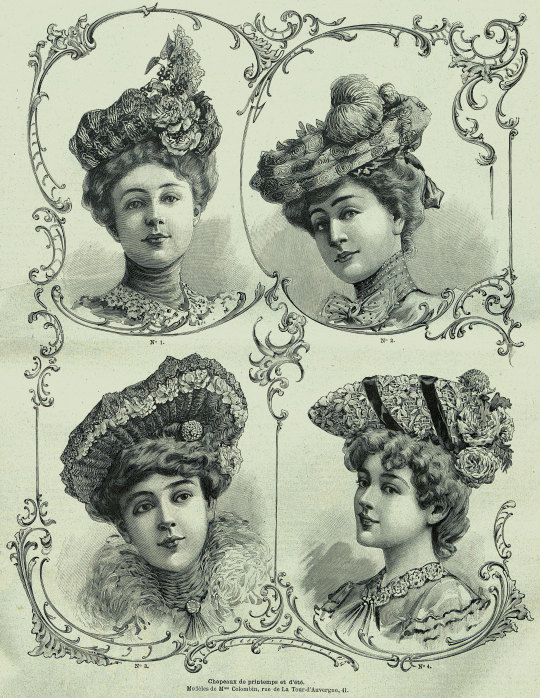
La Mode illustrée, no. 14, 6 avril 1902, Paris. Chapeaux de printemps et d'été. Modèles de Mme Colombin, rue de La Tour-d'Auvergne, 41. Ville de Paris / Bibliothèque Forney
No. 1. — Toquet en laize de paille loutre et linon. Ce chapeau, entièrement drapé de laize, est garni sur le côté d'un bouquet de cassis et roses thé, surmonté d'une aigrette de linon.
No. 1. — Toquet in width of otter straw and lawn. This hat, entirely draped in width, is garnished on the side with a bouquet of blackcurrants and tea roses, surmounted by a lawn aigrette.
—
No. 2. — Toquet couleur sable. La passe toute plissée est brodée, sur tulle, de jolis motifs de paille; le fond, en feuillage velouté, se relève de côté par deux jolies têtes de plumes bleu-turquoise, une draperie de taffetas sable et bleu-turquoise orne le dessous du chapeau et tombe en un pan sur les cheveux.
No. 2. — Sand colored cap. The pleated pass is embroidered on tulle with pretty straw motifs; the background, in velvety foliage, is raised on the side by two pretty blue-turquoise feather heads, a drapery of sand and blue-turquoise taffeta adorns the underside of the hat and falls in a flap over the hair.
—
No. 3. — Chapeau rond, dont le bord, tout en roses de différents tons, est voilé d'une dentelle pailletée de jais; un bouquet de roses avec cabochon en perles fines relève légèrement le côté de la passe qui est recouverte de tulle plissé noir; le fond, en paille rose, se détache sous un nœud de velours noir avec cabochon de perles fines au milieu.
No. 3. — Round hat, the brim of which, all in roses of different shades, is veiled with jet spangled lace; a bouquet of roses with a cabochon of fine pearls slightly enhances the side of the pass which is covered with black pleated tulle; the background, in pink straw, stands out under a black velvet bow with a cabochon of fine pearls in the middle.
—
No. 4. — Chapeau tout en paille ombrée violine. La passe de ce chapeau, garnie d'une guipure crème (genre ancien), est traversée de deux barrettes de velours noir, se terminant sur le fond, fixées par un motif doré; un bouquet de chardons et roses nuancées garnit le côté relevé du chapeau.
No. 4. — Hat all in shaded purple straw. The pass of this hat, trimmed with a cream guipure (old style), is crossed by two bars of black velvet, ending on the bottom, fixed by a golden pattern; a bouquet of nuanced thistles and roses adorns the raised side of the hat.
#La Mode illustrée#20th century#1902#1900s#periodical#fashion#fashion plate#hat#chapeau#retouch#description#Forney#dress#toquet#Modèles de chez#Madame Colombin
46 notes
·
View notes
Photo

La Mode illustrée, no. 3, 17 janvier 1897, Paris. Robe anglaise ornée de galons. Robe avec corsage écossais. Robe avec paletot ajusté. Robe en drap garnie de galons. Robe en velours avec jaquette d'astrakan. Col en fourrure. Collet orné de fourrure et broderie. Paletot-sac avec revers d'hermine. Chapeau de théâtre. Modèles de chez Mmes Coussinet-Piret, rue Richer, 43. Modèles de chez Mme Colombin, rue de La Tour-d'Auvergne, 41. Ville de Paris / Bibliothèque Forney
#La Mode illustrée#19th century#1890s#1897#periodical#fashion#fashion plate#Forney#dress#plaid#paletot#coat#jacket#collar#cape#gigot#stripes#Modèles de chez#Madames Coussinet-Piret#Madame Colombin
105 notes
·
View notes
Photo

La Mode illustrée, no. 35, 31 août 1902, Paris. Chapeau d'automne pour jeune femme. Modèle de mme Colombin, rue de La Tour-d'Auvergne, 41. Ville de Paris / Bibliothèque Forney
#La Mode illustrée#20th century#1900s#1902#periodical#fashion#fashion plate#cover#color#Forney#hat#chapeau#dress#autumn#collar#blue#Modèles de chez#Madame Colombin
205 notes
·
View notes
Photo

La Mode illustrée, no. 7, 12 février 1899, Paris. Chapeau pour jeune femme. Modèle de Mme Colombin, rue de La Tour-d'Auvergne, 41. Ville de Paris / Bibliothèque Forney
En paille gris feutre; la passe est entourée d'un ruban de velours noir; trois plumes: grise, blanche, noire, sont retenues par un fer à cheval argenté.
In felt gray straw; the pass is surrounded by a black velvet ribbon; three feathers: gray, white, black, are held by a silver horseshoe.
#La Mode illustrée#19th century#1890s#1899#periodical#fashion#fashion plate#description#Forney#dress#hat#chapeau#collar#ribbon#velvet#feathers#horseshoe#Modèles de chez#Madame Colombin
74 notes
·
View notes
Photo

La Mode illustrée, no. 51, 19 décembre 1886, Paris. Chapeau de théâtre. — Modèle de chez Mme Colombin, rue de La Tour-d'Auvergne, 41. Ville de Paris / Bibliothèque Forney
La passe de ce chapeau de dentelle crème est entièrement faite à jours, avec des perles crème. Bouquet de plumes nuance scabieuse, avec oiseau assorti et nœud de ruban scabieuse.
The pass of this cream lace hat is entirely openwork, with cream beads. Scabieuse shade feather bouquet, with matching bird and scabieuse ribbon bow.
#La Mode illustrée#19th century#1880s#1886#periodical#fashion#fashion plate#cover#description#Forney#dress#hat#chapeau#theatre#feather#ribbon#Modèles de chez#Madame Colombin
57 notes
·
View notes
Photo

La Mode illustrée, no. 22, 29 mai 1904, Paris. Élégant chapeau d'été pour jeune femme. Modèle de Mme Colombin, rue de La Tour-d'Auvergne, 41. Ville de Paris / Bibliothèque Forney
#La Mode illustrée#20th century#1900s#1904#periodical#fashion#fashion plate#color#retouch#Forney#dress#hat#feather#plume#Modèles de chez#Madame Colombin
86 notes
·
View notes
Photo

La Mode illustrée, no. 27, 8 juillet 1900, Paris. Toque nouvelle. Modèle de Mme Colombin, rue de La Tour-d'Auvergne, 41. Ville de Paris / Bibliothèque Forney
#La Mode illustrée#20th century#1900s#1900#periodical#fashion#fashion plate#Forney#hat#dress#toque#tie#Modèles de chez#Madame Colombin
69 notes
·
View notes
Photo

La Mode illustrée, no. 27, 8 juillet 1900, Paris. Chapeau d'été. Modèle de Mme Colombin, rue de La Tour-d'Auvergne, 41. Ville de Paris / Bibliothèque Forney
#La Mode illustrée#20th century#1900s#1900#periodical#fashion#fashion plate#Forney#hat#dress#collar#lace#chapeau#summer#Modèles de chez#Madame Colombin
50 notes
·
View notes
Photo

La Mode illustrée, no. 20, 20 mai 1900, Paris. No. 3. Chapeau en paille glacée rose. Modèle de Mme Colombin, rue de La Tour-d'Auvergne, 41. Ville de Paris / Bibliothèque Forney
#La Mode illustrée#20th century#1900s#1900#periodical#fashion#fashion plate#hat#bow#lace#Forney#plumes#Modèles de chez#Madame Colombin
68 notes
·
View notes